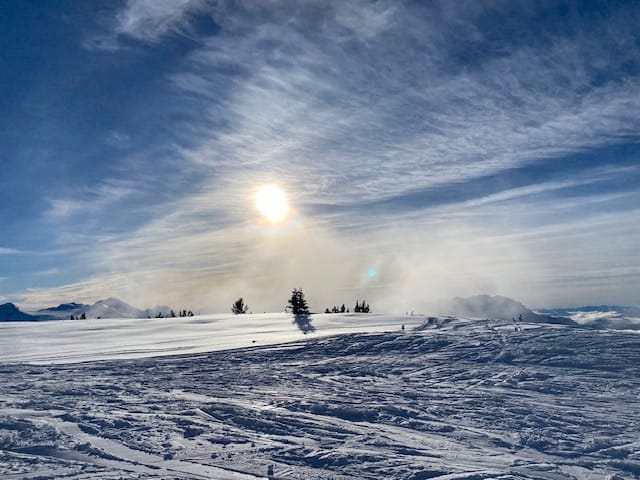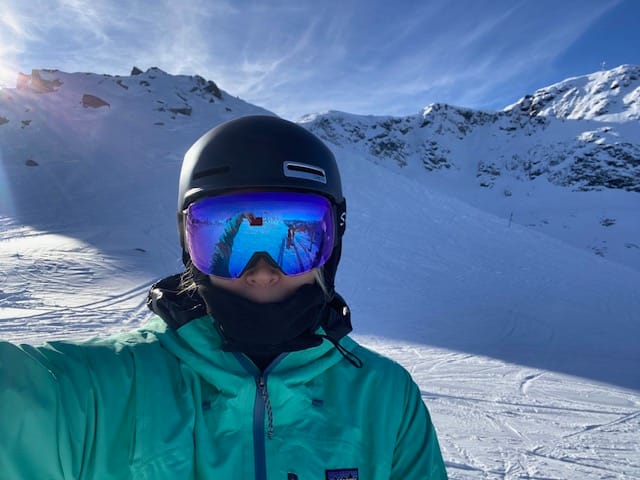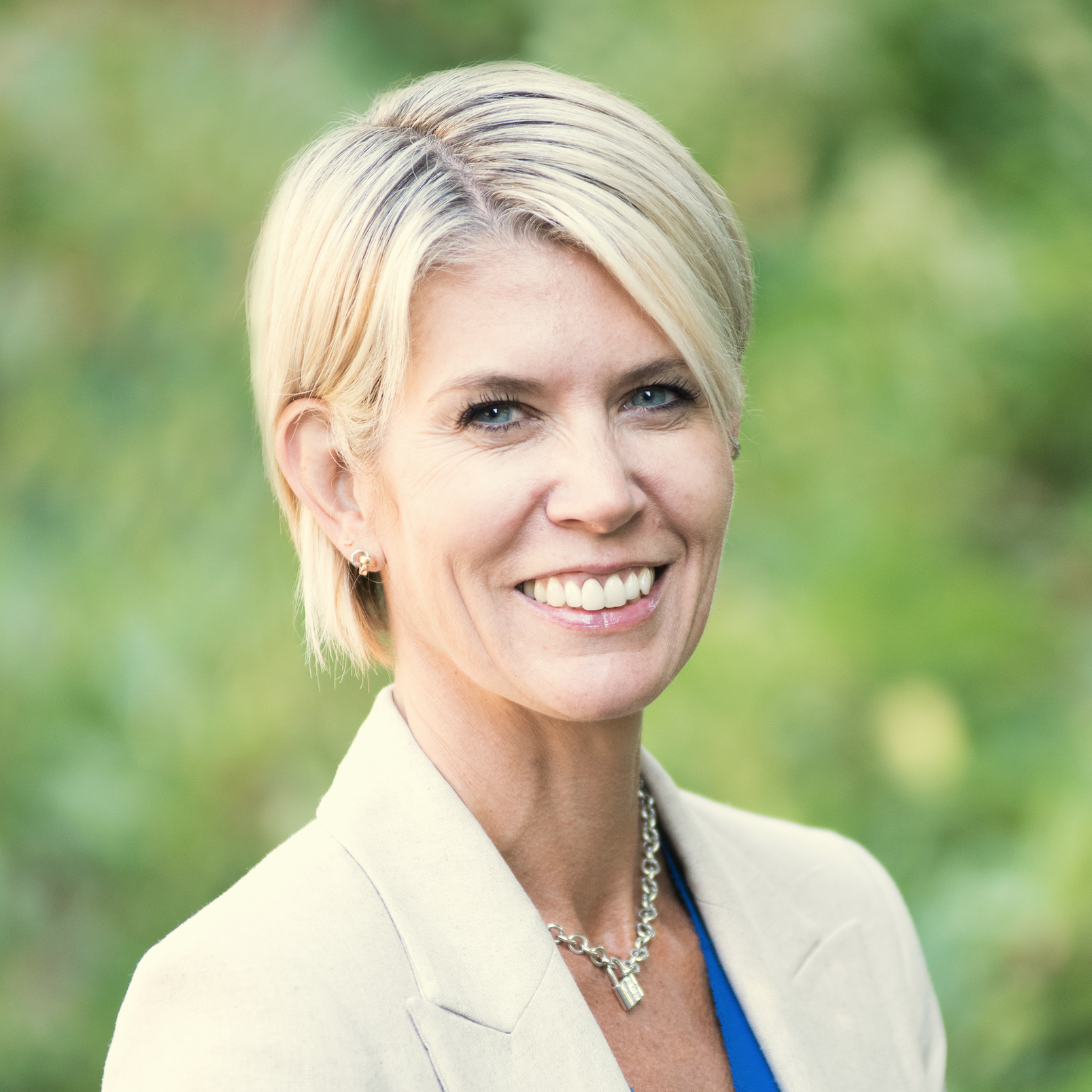Any way you spin it, change is tricky. No matter how ready you are for a change, the human brain will modulate reactions based on anticipatory sets. We humans get accustomed to our rhythms, routines, safe spots and we frequently prefer to stay within those boundaries. Thinking about our thinking is something we frequently do after the fact, after a decision has been made, after a choice has been positioned, or even after a line in the sand has been drawn. While we may vacillate and ruminate in our thinking processes, at some point we call it and try to ground our decisions in the best information we have in the moment of time we are in. We weigh the risks with the consequences and we try to balance our decisions for the betterment of all involved. Sometimes in retrospect, our own decisions may have not been the best ones, but our awareness and consideration to the next time will better inform future choices. Sometimes we wish for the do-over magic wand, but life is full of surprises, unexpected consequences and serendipities. Sometimes the decisions made by others surprise us and lead us to question motives or understandings. Sometimes we just have to learn to think more deeply about our own thinking and strive to find deeper meaning in times of complexity.
Philosophers have been trying to understand the nature of human thinking and reality since the age of time. Applying their thinking to the specific fields of ethics, science, or to broader theoretical or metaphysical topics, philosophers have asked probing questions to stimulate critical thinking and to expose contradictions in people's beliefs. Ancient philosophers such as Socrates, Plato and Aristotle have emphasized the importance of decisive reasoning and the pursuit of knowledge through dialogue and questioning assumptions. My father who has a rich philosophical academic background has always modelled Socratic methods in his thinking processes. He has pushed me through the years to think deeply about Socrates' conceptual pathways on learning and education as the "kindling of a flame rather than the filling of a vessel" (Plutarch). My father's influence on my life has made me perpetually curious and always fired up to learn. He surrounded me in a context of open-ended, thought-provoking questions, always pushing "What else can you question? What else can you learn?" as running mind mantras that I now hold dearly.

Last August, a wise friend introduced me to the legendary work of Lao Tzu and his focus on simplicity, humility and compassion. It came at just the right time as the wheels of change were running in my life and my ability to think clearly under increasing pressure would be continually pushed to new limits. Tzu's philosophical approach earths the roots of wisdom in the seeds of simplicity, inner peace and quiet contemplation. I'm not sure if my friend recognized the gift he had given me, and while there are many different perspectives on Taoism, I am grateful for the exposure to new paradoxes and contradictions that help me think more about how I think and why. Educational leaders need to be critically aware of their thought processes and decision making processes. The privilege of leadership and decision making comes with the chains of uncertainty and risk, which will rattle when the heart and mind dance in tandem. The ancient philosophers search for meaning and purpose is not to be understated. Their quest for understanding continues to influence fundamental questions that ground intellectual curiosity and position dialogue and debate as critical tools for adult learning in modern times.
Upon finishing my doctorate, my thinking brain was ready for yet another change and challenge. Inspired by my youngest daughter, a powerful skier, I decided my next adventure would be returning to downhill skiing. I thought it would be a balanced challenge, with more physical demand than cognitive lifting it would be a healthy stretch goal for me. I felt ready and excited to retry a sport that I had not participated in for just shy of twenty years. I was confident it would be like riding a bike and I would just pick up where I left off. I anticipated that the skills, mind you beginner skills, that I had developed two decades ago would just come back into play and that muscle memory would teleport my rusty ski skills into the present moment. Solid wrong, this post will delicately share my humble discoveries on the slopes as I continue to rediscover how it feels to start again from the beginning and to force an adult mind to think differently.
Season 1: Gravity Assisted Tumbling
The prep work began. First, I made a serious mental commitment convincing myself that I could do this because I've done harder things. Next, came the financial commitments of new skis, boots, poles and mountain pass. Now, it was done, commitments made and off I went with a sinking feeling to the bunny hill. This was two years ago. I spent that entire first season skiing the beginner zones having grand chats with little children on the chairlifts. During this time, one precocious child asked me why I had not gotten any better and why could she ski better than me. As we rode the chairlift, she told me that she had just turned six and proceeded to ask, "How old are you anyways? When are you going to ski with the big people?" I smiled, slid off the chairlift and proceeded to tumble down the mountain. It was not the return to skiing that I had imagined or hoped for. Tumbling, fumbling and humbling does not encompass the magnitude of my mountain mishaps and how I felt about myself as a learner. It was a powerful reminder to my adult self of how it feels to not know what to do, how to do it and how to get better. I had prided myself as being a good problem solver but no amount of online tutorials, tips from friends or research on ski techniques was solving this situation until a few good, heavy early rains ended the ski season. Problem solved, it was too icy for beginner me to manage the slopes. Secretly relieved, I tried to reflect on the season positively, reminding myself that I tried but an icy feeling of failure lingered as the winter turned into spring.
Season 2: Controlled Chaos
This season will be better. I decided that it was all going to come together if I just tried harder. Determined to improve, I set out to the beginner slopes and reminded myself that it couldn't get any worse than last year's spills. With embarrassment I headed back to the bunny hill fumbling my way around, discouraged but determined to figure this out. I stuck with it and much to my surprise after several messy weekends, something started to shift. There was a little muscle memory developing, it wasn't graceful but I was upright and moving just enough to give me hope for improvement.
With the kind encouragement of friends I was convinced that it was time to leave the beginner slopes to try some groomed green runs. My first response to their invitation was a polite no, declining because I did not want anyone to see me ski and witness my uncontrolled chaos. Fortunately for me, they were not taking no for an answer and assured me that I would not be out skied as they were learning too. I am not sure where the courage came from but I agreed. Shortly after getting off the gondola, I realized that my bravado was short lived and I was seriously terrified about what I had agreed to try. There was no way out other than down. Long story short, I tamed my wild thinking mind and trusted the movements as I tipped my skis downhill. I spent the remainder of season two lapping the green cat-skinner runs, frustrated but determined to conquer this mountain one groomed run at a time.
Season 3: From Panic to Powder
This season will be better, for real. It is time to turn the corner, I mean carve the turn and ski my edges. With those ambitions in mind, I decided to surrender, swallow whatever ounce of pride left and to sign up for some beginner lessons. A kind friend had invited me to join her for a 2-day women's ski camp. I was hesitant, more than a little anxious, and procrastinated on registering. When I finally mustered up my nerve, I discovered that the camp was full. Disappointed but partially relieved, I told myself that it was a teleological sign. Everything happens for a reason and this was a sign that this sport isn't for me. I let my adult mind create an escape route and formulated excuses, telling myself that there would be nothing wrong with another cat skinner season.
In my mind, this plan wasn't sitting well as I grappled with why did I let this learning opportunity slide past me and why did I let the registration slip by. A week before the sold out camp was to take place, I decided to do an in-person check in on registration possibilities. Serendipitously I discovered that a spot had opened up, someone had literally just cancelled their registration and lone behold ten minutes later I was signed up for ski camp. Feeling excited and nervous, my inner voice began to narrate the story of what was to come vacillating between that open spot was a sign, this is going to be great, to what on earth have I agreed to do.
As the chatter in my mind erupted, the research of psychologist Ethan Kross surfaced in my memory bank. I had the treat of listening to Kross present his research at a conference in San Fransisco several years ago. I enjoyed how he connected his findings on controlling the conscious mind to his personal life. Kross shared an antidote about how he consciously calms the "I can't" noise in his mind by creating new thought pathways. He shared how he has learned to use self-talk in more adaptive ways. Kross provided the audience with a simple example of how he gets through tough workouts by engaging in counting reps forward and backward, and applying self-distancing techniques such as referring to himself in third person as he thinks his way to the finish line. Kross shared a variety of different tools to help reduce the tension between getting stuck in negative thought spirals and thinking clearly to address the chatter. He shared how these subtle, yet powerful, shifts in perspective can help adults engage in more effective problem-solving and emotional regulation.
The inner voice was always there with something to say, reminding us of the inescapable need we all have to use our minds to make sense of our experiences and the role that language plays in helping us do so.
Ethan Kross, 2022
Kross's work on harnessing the chatter of the mind is essential for adult learners. In his book Chatter (2022), Kross explores how we can think of our mind as a lens and our inner voice as a button that zooms in or out. This analogy is particularly important when the chatter in one's mind zooms in too close to something that inflames our emotions blocking alternative ways of thinking about an experience, situation or interaction. When we lose perspective we fall susceptible to poor decision making. Stress, anxiety, relational disconnects and even depression build when the mind gets stuck in chatter fuelled rumination mode. I recognize that my spin on Kross's studies is a simplified version of complex sociological, psychological and behavioural research. My take away is when we lose our ability to zoom out and gain perspective, the inner voice shifts into one of noisy deliberation. For some regulating the volume of such deliberations can become problematically debilitating negatively impacting one's quality of life. Evidently, mind chatter can be both helpful and harmful depending on our ability to zoom it in and zoom it out.
Now back to ski school and the chatter in my adult mind, as I discovered the reality of what I voluntarily agreed to do. Upon meeting at the base of Blackcomb, we were divided into levelled groups based on our own placement. Myself and four other lovely women met our ski instructor who's first question to us was "When you ski what do you think of?" Our answers ranged from "survive" to other expletives about just getting down the mountain in one piece. In that moment we discovered a mutual mental connection of raw fear as we realized that we were not going to be alone in this experience. With this discovery, laughter emerged and our instructor promised us that by the end of that day we would all be feeling something different. We then began a blue bird ski day like no other, where I skied places that I never imagined I could. While my inner voice continued to narrate my day with "be careful, this could hurt, you're not very good," it started to become quieter as I gained confidence surprised by what I could actually do. I credit this discovery to our skilled ski coach, Hannah, and the great women in my group who were all willing to push harder while supporting each other from the top to the bottom of each run.
The second day of ski school was even better. While I admit that I still felt wickedly scared, especially while riding up Whistler's Peak chair, I realized that my thinking mind was beginning to narrate my experience differently. Instead of the "Oh sh*&! What have I gotten myself into?" mantra that had previously controlled my ski mind, the chatter transformed into a space of wonder and appreciation as "Oh wow, look at how beautiful it is up here" began to fill my thoughts. With gratitude, my season three continues as I eagerly await to head up the mountain tomorrow and the fresh powder that the forecast is calling for.



Adult learning is a multi-faceted and complex process. Differing from pedagogy, the method and practice of teaching to children, andragogy, the method and practice of teaching to adults is an area requiring more attention in today's workplace. The science behind adult learning leans into how the brain weaves together life experiences, perceptions and biases by quickly narrating an internal dialogue about the worthiness of an ongoing event. If we feel good about an experience, our bodies release endorphins which help us feel open and positive about learning. If we feel open to learning, then our body releases dopamine which stimulates the prefrontal cortex keeping us attentive and more likely to remember what we are learning. While this is a simplistic overview of sophisticated neurological processes, the take away is how we facilitate adult learning experiences matters.
Adults need to feel control over their own learning and require concrete experiences for application in order for the learning to stick. Malcom Knowles (1989) created a noteworthy framework for adult education. While several decades have passed since Knowles published his research on adult learning, the tenants of his five step framework hold true (Nebel, 2022).
- Self concept: Adult learners are self-directed humans who learn more when they have control over the learning experience.
- Role of experience: Adult learners need opportunities to apply their life experiences and participate actively.
- Readiness to learn: Adult learners need "just in time" opportunities with direct application and transference into their lives.
- Orientation to learning: Adult learners need to connect to the purpose of learning and see how acquiring new learning will better their life experiences.
- Motivation to learn: Adult learners need to feel an extrinsic and intrinsic drive to acquire new information. Adult learners need to feel interested and inspired to procure new knowledge.
Over the course of countless years, sociological, cultural, political, and psychological researchers have tried to pinpoint the nature of adult thinking to better understand why we adults do and think as we do. Research insights are crucial as we strive to cultivate deep thinking skills at all ages for a better world. New Zealand educational researcher John Hattie studied the impact of developing thinking competencies in school-age children and youth for over two decades. His concept of visible teaching and learning examines the enhanced role of educators on student engagement and deeper learning. Hattie (2009) identifies the following ten thinking-based practices that have been proven to be highly effective in developing educational environments which stimulate deeper learning.
- Integration with prior knowledge - Humans need to connect their learning to what they already know to stimulate deeper learning processes.
- Transfer strategies - Humans need to be able to apply their knowledge to different contexts to achieve transference and depth.
- How to think about content - Humans need to develop critical thinking skills in order to engage in the processes of analysis, evaluation and synthesis of information.
- Discussion and dialogue - Humans need to have opportunities to engage in open ended discussion and dialogue to share thoughts and ideas.
- Elaboration and organization - Humans need to learn to expand on and organize ideas logically.
- Reciprocal teaching - Humans need to externalize thought processes through collaborative conversation.
- Metacognitive strategies - Humans need to learn how to think about their own thinking processes and explore how to plan, monitor and evaluate their learning.
- Self-verbalization and questioning - Humans need to talk through their thought processes and ask questions about why they are thinking what they are thinking.
- Concept mapping - Humans need to use tools to organize and represent ideas or knowledge. These tools can include visual representations or audio translations of nodes to represent topics and how they relate to each other.
- Comprehension strategies - Humans need to engage actively with material in order to improve understanding. Feedback, clarity and consideration to cognitive load are factors that can enhance or detract from a human's ability to comprehend new learning and thinking.
Hattie's meta-analysis reveals that teaching practices that engage students in thinking are associated with above-average effect sizes and more positive learning outcomes (Ritchart, 2023). I appreciate this type of research as I look through the lens of pushing thinking systems alongside of the importance of developing human deeper learning competencies. Before we can effectively enhance students' thinking skills, adults must first be aware of their own cognitive development and thought processes. Ron Ritchart's work on making thinking visible guides educators in reflecting on their mental models, fostering openness in today's classroom. He draws attention to the importance of adults thinking differently in order to learn deeply. If you are curious to explore your own thinking habits, then check out this neat APA 9 thinking habits activity. This activity is designed for secondary school students but is totally applicable for curious, thoughtful adults.
Mindset shifts and human learning processes are interconnected but distinct. While some may debate this distinction, my ongoing research has highlighted the complex and intertwined nature of adult thinking, behaviour and experiences. As someone who has leaned into research and reading to support my learning and related decision making, the irony in this post doesn't come lightly. No excessive amount of peer reviewed research or YouTube ski tutorials could have shifted my beginner skier reality and interrelated thought patterns as I struggled into my ski boots. Although something did move as I discovered that I could fall and get back up, that I could unlearn and relearn, that I could start and stop again and that I could control all of this by working consciously, and intentionally, on thinking differently. With hardcore determination, humility and desire, I am learning how to find joy in doing something that I am not good at, and probably never will be really good at. I will never be a skilled and poised black diamond skier but I am learning to think differently about what success and mastery really mean as I rediscover the beauty of the wintery mountains, the cool, crisp fresh air and the blessing of having a healthy body that is able to move freely in the alpine.
Too often we adults prop barriers and limit our thinking based on pride or predisposed expectations. Frequently we don't give ourselves the grace, and humility, to learn, unlearn and relearn. My mindset about skiing was intricately woven into my expectations of success, and my frustrations with the relearning process were entrenched in adult thought patterns and expectations. Change and new adventures are tricky. Our willingness to step outside of our comfort zones, to think again, to probe why we think what we think and to in turn model this to our children is essential. While this spin explores the importance of adult thinking, I hope it also emphasizes the necessity pushing boundaries and safe spots alongside of Tzu's teachings of simplicity, self-awareness and how the roots of wisdom lie within in one's thoughts, sense of self and the beauty of the natural world.




